1. Spiritual significance of Implements used in Puja
The implements used in the worship of Deities are outstanding mediums for transporting sagun waves of Deities to the individuals. In this article, we will explain spiritual benefits of implements used in puja.
A. Kalash (Metal pot)
-
At the time of Great Churning of the ocean (known as samudramanthan), Srivishnu carried the kalash with amrut (Divine nectar of eternal life). All Deities dwell in the kalash. Hence, a kalash is always a part of puja.
-
‘The peculiar shape of the kalash creates a distinct subtle-sound in the void within. The vibrations resulting from the subtle-sound attract Shiva Principle from the universe. As a result of these subtle-sound waves, the individual gets added benefit of the Shiva Principle.’
B. The platter
‘The platter used for placing niranjan represents Panchapran in our body. When performing arati, the individual should have a bhav that ‘I am performing arati with the help of these Panchapran.’
C. Bell
The importance of sound from bell and the conch
The peculiar shape of the bell and its clapper attract earth waves which accumulate in the peculiar shape. When the bell is rung, these accumulated waves from the atmosphere begin to vibrate and the resultant sound energy attracts the Shiva Principle, that is, it leads to activation of the Shiva Principle in the universe. These sound waves are associated with the Shiva Principle. These sound waves are laden with Raja component and are destructive in nature, which causes disintegration of the Raja-Tama particles in the distressing waves emitting from patal (Hell region).
Ringing of the bell purifies the environment in the downward direction below the surface of the earth; whereas, blowing of the conch purifies the waves in the environment in the upward direction above the surface of the earth. Hence, both these activities have a great significance in puja. The sound generated by both the instruments purifies the environment around the seeker, making it sattvik and conducive for spiritual practice. This enables the individual absorb maximum sattvik waves emitted from the Deity.
-
Bhav unto God is awakened due to sounding the bell.
-
The vibrations attracted to the puja of God are in the nirgun (Non-materialised) form. As a result of sounding the bell, these vibrations take a sagun-nirgun (Materialised-non-materialised) form and are then received by the devotees.
-
The clouds of black energy created by the negative energies in the environment are eliminated as a result of sounding the bell. Similarly, a flow of Chaitanya (Divine consciousness) comes towards the devotees just like the sunlight.
-
The brass metal converts the superior most sound vibrations created by God (Sounds emanating from Omkar and other bijmantras) into inferior sound vibrations that are beneficial for an average individual.
-
Sound is created when the clapper strikes the edges of the bell. Similarly, vibrations of Shakti (Divine Energy) and bhav are created by the sound vibrations, and then spread into the environment.
-
The sound of implements used in the puja (the sound of a bell or a conch etc.) is beneficial for an individual at the level of akashtattva. Similarly, the sound of arati, hailing, chanting of the Name etc. awakens Divine sentience in the individual and it is able to establish communion with God.
-
When an individual sounds a bell with intense bhav, sattvik vibrations are created by it; whereas, if the bell is not sounded, Raja predominant vibrations can be emitted by even a sattvik ’
D. The conch
Importance of a conch
-
The conch is sounded before commencing puja and arati. The conch used for the purpose is left sided (There are two types – Right Dakshinvart and left Vamvart sided conch.)
-
After a kalash is worshipped, before worship of a Deity, the conch is worshipped; sandalwood paste is applied to it and flowers and tulsi leaves are offered to it. Then the worshipper sprinkles water from the conch onto himself by the using a flower and on the implements used in puja. Water from the conch is considered as pure as the Holy water of river Ganga. This water is also used for abhishēk of the Deity.
-
The conch represents the manifest destructive energy of God.
-
Sound emitted upon blowing a conch destroys disease germs. The sound can also break ice glaciers. Hence, a conch is not sounded in ice covered areas.
E. A lamp and a niranjan
The flame of a niranjan symbolises the atmajyoti. The jiva should have a bhav that the ‘Panchapran within my body are keeping the atmajyoti burning and are offering arati to God with this flame’. The five petalled niranjan displays the relationship of the Panchapran with the atmajyoti. An earnest prayer made through Panchapran is termed as ‘Pancharati’.
2. The importance of using the old implements in Puja
A. Old implements become sattvik
Implements used in puja for several years become sattvik : ‘Use of new implements in puja does not give much spiritual benefit, because their getting activated and developing the power to absorb sattvikta takes several years of use in puja or arati. Only the immense bhav of the worshipper can bring about the required level of sattvikta within a few months of use. Bhav in most devotees is less; hence they should perform puja or arati with old implements.
Proximity to Deity’s Idol: Since these implements are always placed in front of the Deity, they can absorb Chaitanya and the sattvikta emitted by the Deity in larger quantities. These reasons prove that repeated use of same implements benefit the worshipper. Use of such implements charged with sattvikta help ‘awaken’ an Idol or an image of a Deity faster.
B. Effect of old implements
Awakening of bhav : Use of sattvik implements help awaken the bhav of the worshipper. Many a time, mere handling of the implements awakens bhav; at other times even a glance at the implements suffices (to awaken bhav) with the thought that ‘We are toiling in the sattvikta. Besides, cleaning these implements everyday with tamarind and lime before puja removes the black energy enveloping them.
C. Special features of copper
1. Copper has the capacity to absorb upto 30% the Principle of all Deities.
2. Copper has the capacity to absorb the sattvikta to the extent of 30%. Hence, it is considered auspicious.
3. Copper has the capacity to destroy Raja-Tama components to the extent of 70%. Hence, keeping a substance (for example, water) in a copper vessel reduces the Raja-Tama components in water by 70% and the sattvikta in it also begins to increases.’
Reference : Sanatan Sanstha’s Holy Text on ‘What is the Importance of the Substances used in Ritualistic Worship?‘ and ‘Science underlying worship with five and sixteen substances’

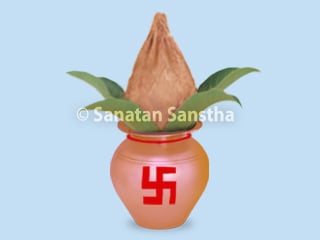
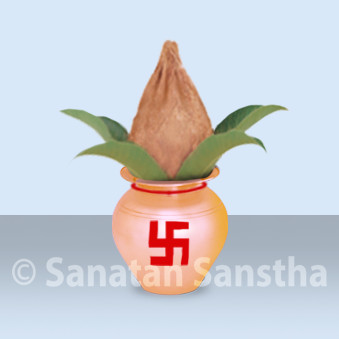
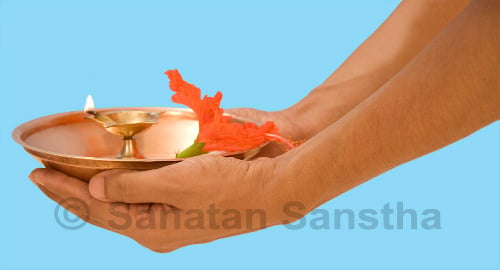
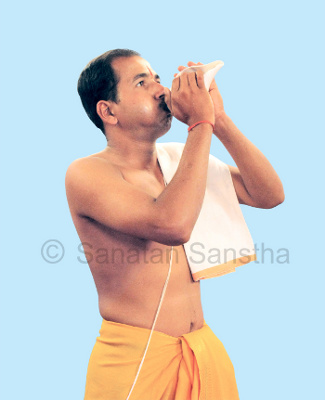
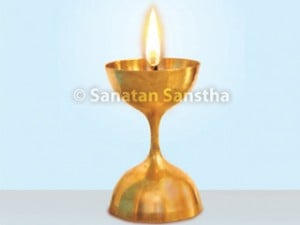
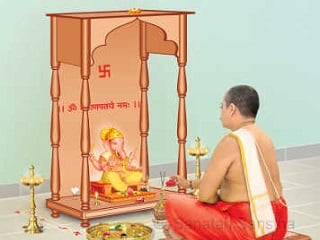 How to perform Puja Vidhi ?
How to perform Puja Vidhi ? Importance of Puja Samagri in ritualistic worship
Importance of Puja Samagri in ritualistic worship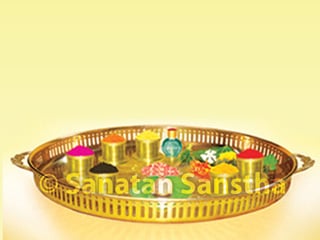 How to arrange the substances in Puja Thali ?
How to arrange the substances in Puja Thali ?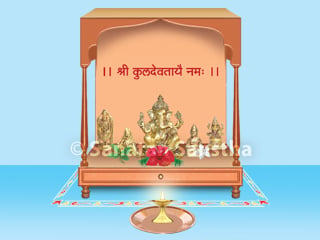 How should be the design of Devghar ?
How should be the design of Devghar ?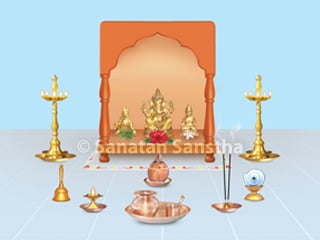 How to arrange the Puja items used in puja ?
How to arrange the Puja items used in puja ?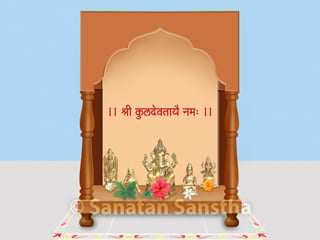 How to arrange Deities in Home temple ?
How to arrange Deities in Home temple ?